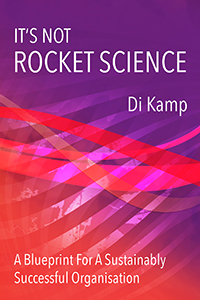This is a story from my childhood, and since my mum tells it best I’ll allow her to tell you it:
“Jo came home from school one day rather upset because he had got a bad mark for his drawing. I asked him what he had been drawing, and he pulled out his picture to show me. It was a banana. He looked at it and at me and said tearfully, “My teacher said that I should have coloured it yellow – but that’s not really true is it mum?” Jo had coloured his banana green, yellow, orange, brown and black. I agreed with him that bananas could be all these colours and tried to explain to him that adults forget to look properly. I eventually worked out how to make it right: We gave him A+ for his picture and his teacher, D- for her mark! “
This month’s workshop is about children’s creativity, and how we, as grown-ups can play with it!
I had no doubt that that banana was all those colours, and I drew what I saw – green, black, brown, orange and yellow – but narrow-minded, non-imaginative teachers teach us that bananas are yellow, oranges, orange apples, green etc. We are taught not to believe what our imaginations tell us we see – we are taught an adult view of the world. Incidentally, adult literally means to spoil, and has the same root as adulterate and adultery, hence our preferred word here at Meta – grown-ups.
As a child, our imagination is absolutely as real as the ‘real world’ we see with our eyes. I remember being at a house where my then girlfriend was an au-pair to two young kids. They were playing – with absolutely no toys or props, simply their imaginations.
‘What are you doing?’ I asked naively,
‘What does it look like?’ answered the boy somewhat incredulously. ‘I’m selling plums from my market stall!!’
Kids’ imaginations fill their drawings and creations. I don’t know about you, but my imagination has been somewhat dulled by an education that severely lacked any! And by the ‘real world’ of being an adult and all the responsibilities that entails. Wouldn’t it be nice to dream and create like children again – allow ourselves the time to play and daydream!
This month’s workshop challenges you to play like children, no real fancy props needed, just your imagination and whatever you find around you. After all, kids can create with virtually anything – Blue Peter is a testament to that!
Homework – (or PLAY..or FUN..)
Here are a few suggestions for helping you to regress to childhood and enjoy some child-like play and creation..
It is important to remember that when a child creates, everything it does is perfect, there’s no such thing as a bad drawing or a ‘I can’t do this’..
- Paper and pens and squiggly lines (You know what I mean – and if anyone asks, just tell them it’s a banana or something equally obscure..)
- Crayons – go play with crayons: houses with smoke coming out the chimney, I can see it now.
- Tissue paper – remember those Easter cards you made at school?
- Glitter and glue and pasta shapes
- Making cards for people – let your imagination run wild
- Drawing people – draw your friends’ portraits, capture their essence, like a child would – accuracy not required
- Finger painting – go on, get dirty!
- Face painting – what a perfect party ice-breaker!
- Paper mache – balloons out, wallpaper paste at the ready!
- Spray painting – straws and lots of watery paints and of course, some puff!



